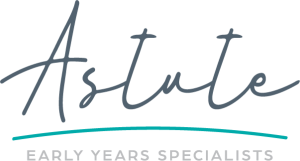“Some days just disappear in a blur and I don’t feel like I’ve achieved anything!”
“It’s Friday and I haven’t taken as many observations of my children as I’m supposed to!”
“I never feel like I’m ‘present’ with the children – I’ve always got half my brain focused on what’s coming next or what needs doing!”
These, and many others, are some of the statements we hear every day from educators, many of whom are feeling overwhelmed with the job of caring and educating young children. And who can blame them? If you jump in any social media forum, you will encounter a world of truths, myths and misinformation, from overworked, undervalued and underpaid (but none the less – awesome!) educators.
But, in some sense, there is an antidote to this condition. Slow down. Yep, sounds easy, but it’s not really. Across the world, there is a movement that is slowly (sorry for the pun) gaining traction. The Slow Movement is a movement comprised, in short, of asking us to all Slow Down. We can even break it down into bit sized chunks. There is Slow Food, Slow Travel, Slow Cities, Slow Living, Slow Money and…ta dah…Slow Education!
Now, slowing down is not suggesting you just drop everything…although that does sound appealing. Slowing asks us to use TIME to our advantage, not to be a victim of time. It asks us to take control of time. Slowing down for educators means stopping, pausing, and exploring ideas, concepts and moments with children that are deep and meaningful, giving time to understand concepts, actions and to think, and to spend time within our relationships (not around them). The tempo – or pace – of the room needs to reflect the diversity of the children and adults within it. That is to say that some children will require much longer on tasks than others, and as educators, we should be attuned (2) to this, recognise it, plan for it, and allow for it. As we know, the one size approach does not suit everyone, and this, to a degree, is why sometimes we feel so overwhelmed.
Stopping and just being present allows you, alongside a child, to truly be engaged in the moment and to recognise how this child is learning, and to be able to respond in an engaged, attuned way.
The principles of slow education are:
- Time for deep learning experiences with real outcomes
- Time for curiosity, passion and reflection to be at the heart of learning experiences
Time for dynamic, collaborative, democratic and supportive relationships for learning(3).
And some tips for getting started include:
- In all that you do, trust that children have an innate desire to learn
- Be attuned to the children in your care so you quickly identify when learning opportunities arise
- Examine your environment to ensure that it is accessible and suitable for ALL of the children in your group, allowing for autonomy
- Recognise that every adult-child interaction is ‘teaching’. Such interactions, when done skilfully, will naturally lead to progress for the child
- Talk with your colleagues about implementing this approach, even if it’s just for parts of the day or longer blocks of time(4)
- Throw out the clock and learn to work with the natural rhythms, cues and behaviours of children and your team
- Breath, relax and smile!
Some of the benefits include:
- Deeper, more reflective observations of children – there may be less of them than when you were moving faster, but oh, they will be so much more engaging, powerful and truly honour the child’s capacity, capability and ‘being’
- A greater understanding of the direction learning could/should take
- Deeper, better connected relationships with children, and between adults
- Fewer feelings of stress and anxiety in children (and consequently, adults!)
- A more natural ebb and flow to the day for all.
Now, changing how we do things is never easy, so if you do plan to slow down, you may need to re-evaluate your systems and your priorities – actually, you probably will! Which is always a good thing.
Recognise and acknowledge that old habits always tend to die hard, and it’s important to note that any kind of change takes time, and time to work through any new issues that arise with it. Sometimes it is 2 steps forward, 1 step back for a period of time, until you and your team develop a flow and sense of comfort starts to exist.
If you do plan to slow down, also note that this new approach will affect the children as well, so recognise this and work with it, not against it.
Kim
Some websites to help you get you thinking about taking it slow…
